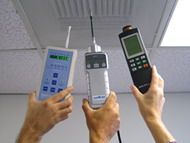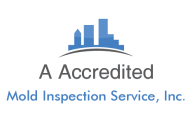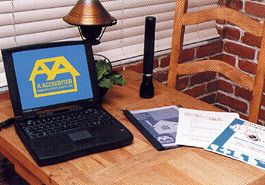West Palm Beach Indoor Air Quality Testing Service
We offer West Palm Beach indoor air quality testing services, Ft. Lauderdale indoor air quality testing services, and indoor air quality testing in all of South East Florida.
We do not just test your air, but we are determined to find where the issue is coming from and why. Our goal is to understand the root cause so the problem can be addressed in such a way that the chemical problem or mold does not keep coming back.
at A Accredited Inspection Service We specialize in chemical related IAQ or indoor air quality testing and consultation services as well as mold, allergen, and humidity problem investigations.

Three tools for testing indoor air quality including a formaldehyde meter left, a photoionization detector center, and a particle counter right.
DO YOU NEED PROFESSIONAL INDOOR AIR QUALITY TESTING?
Since 2003 our West Palm Beach consultant has provided professional indoor air quality testing in all of South East Florida. To aid you with fair and trusted services, we are a no-conflict of interest company. We only test and inspect your property and do not offer corrective services.
We present a comprehensive report clearly stating the location and likely cause of the air quality issue. In addition, we identify the types and quantities of chemicals present to the parts per billion. Most importantly, we give written advice on recommended corrective measures.
If you are seeking an indoor air quality consultant in Miami, Ft Lauderdale, or West Palm Beach you have come to the right place.
REASONS TO TRUST US
WEST PALM BEACH INDOOR AIR QUALITY TESTING
EXPERIENCE
You can trust your valuable property and health to experienced hands. We have been providing reliable services in the form of indoor air quality testing in your area since 2003. To see examples of some of our past commercial building IAQ inspections click here. We have the experience you have been looking for.
 INDOOR AIR QUALITY TESTING AND MOLD INSPECTION
INDOOR AIR QUALITY TESTING AND MOLD INSPECTION
CERTIFICATIONS
When using A Accredited Inspection Service you will be hiring a mold testing and air quality testing service that is properly certified.
The CIEC Certification is without any doubt one of the nations highest mold and indoor air quality related certifications. Most certifications require nothing more than two days of classes in a hotel room. You can verify our certification by clicking here.
Our CIEC certification requires 8 years of experience, or 8 years of education, or a combination of relevant experience and secondary science education. The experience and education requirements must add up to a total of eight years. There is quite obviously a big difference between a certification that was two days in the making and one that was 8 years in the making.
In addition to strict prerequisites, a rigorous exam taken at a proctored testing center is required. Your local mold inspector Daryl Watters received a 85 on his CIE exam in 2004 and a 96.6 on his even harder CIEC exam in 2015.
 OUR
OUR
REVIEWS
You don’t have to trust us, we have plenty of 5-star reviews, always check reviews and take the time to read them. Just click here to see what our clients have to say about our mold services.
OUR
LICENSE
Of course we are licensed. Here is a link so you can verify our license status. License number MRSA 328. We obtained our mold assessment license the very first year mold licenses were offered in the state of Florida! Unfortunately, the state of Florida offers no license for indoor air quality testing.
OUR INDOOR AIR QUALITY TESTING
REPORT
Our West Palm Beach air quality consultant will provide a comprehensive inspection report that gives various causes of air quality problems. We also provide environmental readings and recommendations about the best possible remedy. The written report will contain photos and elaborated details. The report will cover various issues related to air quality problems at your home or commercial building.
We not only use mold inspection reporter (MIR) software forms for creating chemical related indoor air quality reports, allergen reports, humidity problem reports, and mold reports. We also created (MIR). This reporting system was created by our inspector Daryl Watters. It is used by many other IAQ consultants and mold inspectors nationwide.
Thus, you will receive a quality air quality report.
If you are having air quality issues and you reside in West Palm Beach, Miami, Fort Lauderdale or anywhere in South Florida we can help.
Give us a call at 1 888 381-6651.
Let us help you breathe easier.






